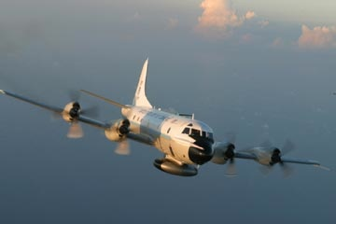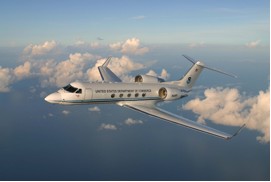The National Oceanic and Atmospheric Administration (NOAA) also flies aircraft into hurricanes to aid scientists in better understanding tropical cyclones and to improve forecast capabilities. NOAA planes tend to be more highly instrumented than that of the Hurricane Hunters. Aircraft used in NOAA missions include the WP-3D Turboprop (P-3 Orion) and the Gulfstream-IV SP jet. The aircraft provide long-duration and long-range access to the lower and middle troposphere, equipped with an unprecedented variety of scientific instrumentation, radars, and recording systems for both in-situ and remote sensing measurements. With a flight crew of 10 individuals (including 3 scientists), the WP-3D aircraft are on standby or deployed for hurricane research and reconnaissance 120 days of each year. In addition to these hurricane research missions, the aircraft also support diverse programs throughout NOAA, outside the agency, and internationally. Prior to the use of these planes, a number of other aircraft were flown, such as B-47s and B-57s and DC-6’s. The WP-3D aircraft has been the primary airborne platform for NOAA meteorological research since the late-1970s. In the late 1980’s and early 1990’s, these planes became the platform for development of both airborne Doppler radar and microwave sensing of surface winds. Doppler radar provides very high resolution, horizontal and vertical, real-time data on the inner winds and precipitation within the eyewall of a hurricane. Data on these features are critical to hurricane intensity forecasts. A new instrument called the Scanning Radar Altimeter (SRA) is able to provide information about the height, wavelength, and direction of waves over the ocean and the full wave spectrum.
Another NOAA aircraft is the Gulfstream- IV SP jet (G-IV), a state-of-the-art, high altitude (up to 45,000 ft) research platform that can carry a crew of up to 18 individuals (including 9 scientists). It is primarily used for operational synoptic surveillance missions to improve guidance for hurricanes that threaten the continental U.S. Virgin Islands, Puerto Rico, and Hawaii. During these missions, dropsondes are deployed from high altitude over large areas of the open ocean. Missions and subsequent data gathered is especially important in those locations where few observations are available. G-IV jets have recently been outfitted with Doppler radar and a special version the stepped-frequency microwave radiometer (SFMR). Doppler radar will greatly increase scientists' ability to see into the heart of a hurricane, due to the lofty vantage point this radar will have (40,000 ft high, as opposed to the 25,000 maximum altitude of the Doppler radars on the P-3s). Other NOAA aircraft also involved in hurricane surveillance include the Rockwell Aero Commander (AC-500S) and the Cessna Citation 11 (CE-550). These smaller planes (total crew of 5, 2 pilots and 2-3 scientists) are primarily used for post-hurricane surveys and assessments. Once a hurricane has made landfall, these aircraft are sent out to collect post-disaster digital photography documenting any resulting damage. The Cessna Citation may also serve as an emergency responder. |



